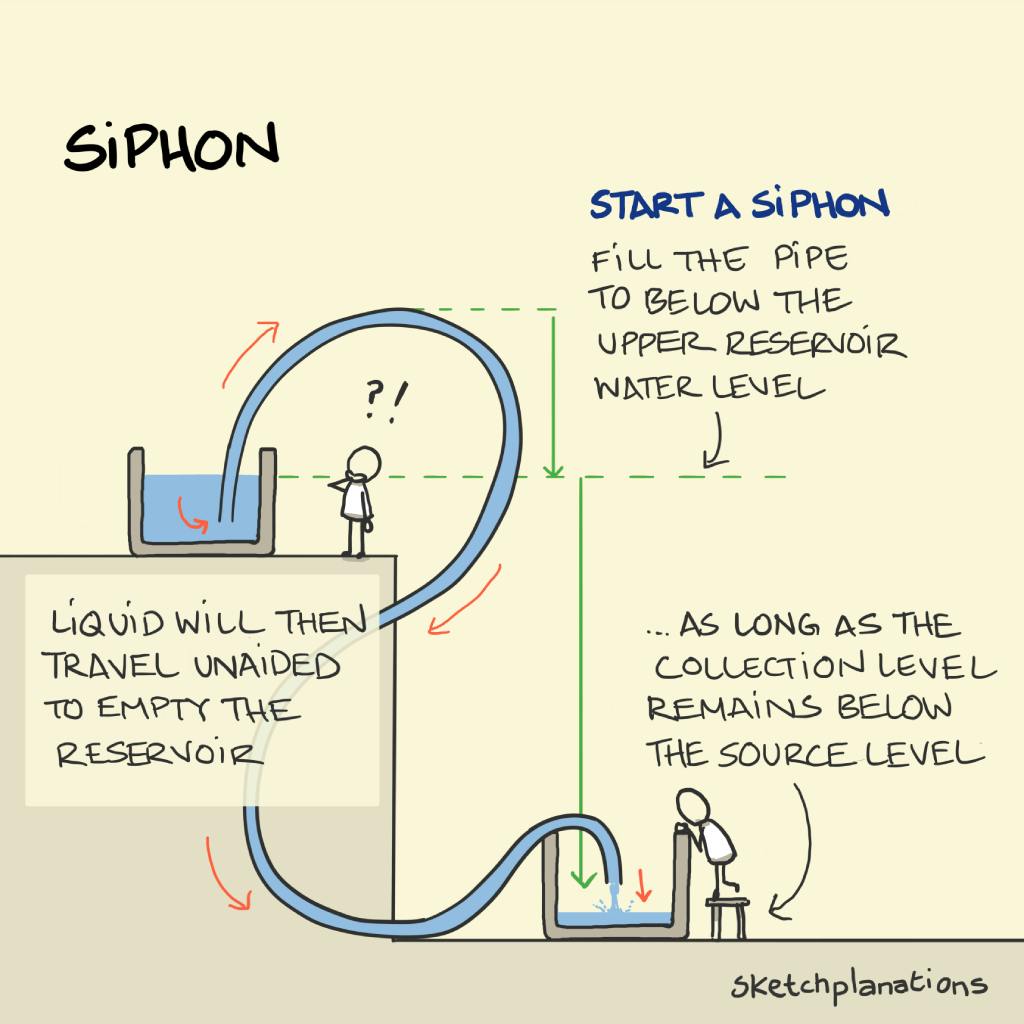Siphon

- Prints
- Copied!
👇 Get new sketches each week
The siphon, or syphon, is a simple device that uses only a tube to seemingly pump water from a higher spot to a lower one. It's ingenious because once you start the siphon by filling the pipe to below the height of the upper reservoir level, it will continue draining the water, pulling it over the hump and towards the collection below without further help.
Most of us use siphons several times daily, as there are often two at work in the standard toilet. Sometimes there's one in the flush mechanism—one push of the handle to start the siphon drains the water from the reservoir until it runs out. And you can flush a toilet using the second siphon by pouring enough water directly into the bowl to push the water over the bend in the pipe to start it— think how the water drains by itself almost completely before filling up to the level of the bend once again. It's a clever way to power a toilet flush with just the press of a button or turn of a handle. They also minimise leaks and control the flow by running the water uphill.
We set up a greywater siphon to drain water from the bath and showers to a water butt in the garden. To get it started, we connected the end of the hose in the garden to a tap and ran water back up the hose until it shot out the top. Then, dipping it in the water, turning off the tap, and putting the end in the water butt, like magic, the siphon pulls water out of the bath until it's empty.
Surprisingly, a few effects are at work in a siphon, and its mechanism is debated . They can be made to work in a vacuum and even spray liquid upwards with the right setup.
I read that it is from the ancient Greek siphōn meaning a tube or pipe, often for drawing wine from a cask—that would be a decent situation to start the siphon by sucking on the end.

